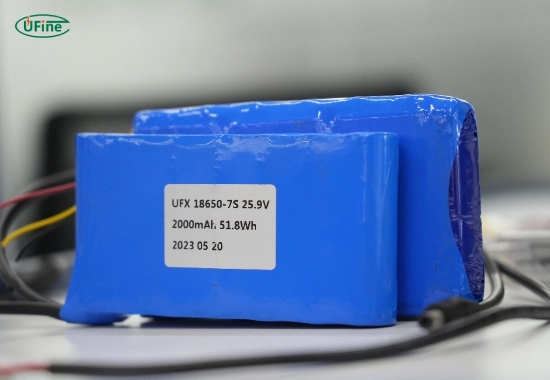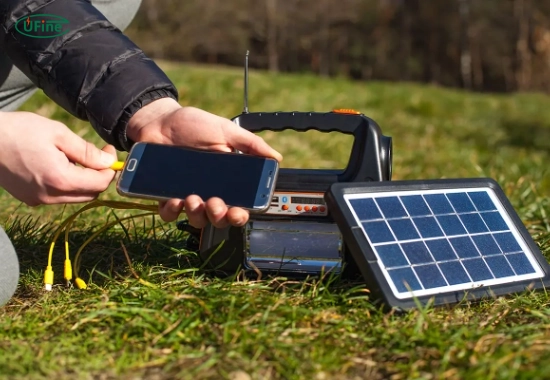Finding the best battery pack travel lightweight is essential for modern travelers who rely on their devices for navigation, communication, and entertainment. As our reliance on technology grows, so does the need for portable power solutions that can keep our gadgets charged while on the go. This comprehensive guide will delve into the various aspects of battery packs, helping you understand their features and benefits and how to choose the right one for your travel needs.
Part 1. What is a battery pack?
A battery pack is a compact and portable power source designed to charge electronic devices such as smartphones, tablets, cameras, and even laptops while away from traditional power outlets. These devices come in various sizes and capacities, making it easy to find one that fits your requirements.
What are the benefits of using a battery pack?
- Portability: Lightweight designs enable easy transport in bags or pockets.
- Versatility: Many battery packs can charge multiple devices simultaneously.
- Convenience: No need to search for an outlet; charge your devices anywhere.
Part 2. Key features to consider when choosing a battery pack
When selecting a battery pack for travel, several key features should be taken into account:
- Capacity (mAh): The milliampere-hour (mAh) rating indicates how much power the battery can store. For instance, a 10,000 mAh battery can typically charge a smartphone twice to thrice.
- Weight: Opt for lightweight options that add only a little bulk to your luggage.
- Size: Compact designs are more accessible and can fit into bags or pockets without hassle.
- Charging speed: Fast charging capabilities can save you valuable travel time.
- Ports: Multiple USB ports charge several devices simultaneously, especially when traveling with friends or family.
Part 3. Common battery types for lightweight travel packs
Understanding the different types of batteries used in lightweight travel packs can help you make an informed decision:
Lithium-Ion Batteries
Lithium-ion batteries are the most common type found in portable chargers today. They offer high energy density and long cycle life, making them ideal for frequent travelers.
- Pros: Lightweight, high capacity, and relatively fast charging.
- Cons: Sensitive to extreme temperatures and may degrade over time if not used properly.
Lithium Polymer Batteries
Lithium polymer batteries are similar to lithium-ion but use a gel-like electrolyte instead of liquid. This allows for thinner designs and shapes, making them popular in ultra-slim power banks.
- Pros: Flexible design options and lighter weight.
- Cons: Generally lower energy density compared to lithium-ion batteries.
Nickel-Metal Hydride (NiMH) Batteries
While less common in modern portable chargers, NiMH batteries are still used in some older models. They are known for their reliability and safety but tend to be heavier.
- Pros: Robust and stable under various conditions.
- Cons: Lower capacity compared to lithium-based options and heavier weight.
Part 4. How do you maximize battery life while traveling?
To get the most out of your battery pack during travels, consider these practical tips:
- Charge fully before departure: To maximize its utility, ensure your battery pack is fully charged before you leave home.
- Turn off unused features on devices: Disabling Wi-Fi or Bluetooth when not in use can help conserve power on both your device and the battery pack.
- Use airplane mode when possible: Activating airplane mode can significantly extend your device’s battery life by limiting background processes.
- Monitor app usage: Some apps consume more power than others; close those that aren’t necessary during your trip.
Part 5. Applications of lightweight battery packs in different travel scenarios
Lightweight battery packs serve various purposes depending on the type of travel you’re undertaking. Here’s how they can be beneficial in different scenarios:
Business Travel
For business travelers who rely heavily on their laptops and smartphones for presentations or meetings, a reliable battery pack ensures that devices remain charged throughout busy days filled with back-to-back appointments. A high-capacity power bank with multiple USB ports allows charging several devices simultaneously, ensuring productivity is never compromised.
Outdoor Adventures
When hiking or camping in remote areas with limited electricity, lightweight solar-powered chargers or high-capacity battery packs become invaluable; they allow adventurers to keep their GPS devices and cameras charged without worrying about finding an outlet. Some models even feature rugged designs that can withstand outdoor conditions.
Family Vacations
Traveling with family often means multiple devices needing charging—tablets for entertainment during long drives or smartphones for capturing memories. A lightweight battery pack with enough capacity can keep everyone’s gadgets powered up without constant stops at charging stations or outlets.
International Travel
In international travel scenarios where plug types vary by country, having a universal battery pack can be a lifesaver. Many modern power banks come with built-in adapters or multiple ports that accommodate various plug types, ensuring you stay connected no matter where you are.
Part 6. Are there any safety concerns with battery packs?
While battery packs are generally safe to use, there are precautions you should take:
- Avoid extreme temperatures: Protect your battery from heat sources and freezing conditions to prevent damage.
- Use certified chargers and cables: This reduces the risk of overheating or short-circuiting during charging.
- Inspect regularly: Check for any signs of wear or damage before use to ensure safety.
Part 7. How is my battery pack compatible with my device?
Most modern battery packs have universal USB ports that work with various devices. However, it’s essential to check:
- Charging specifications: Ensure that the voltage and current ratings match your device’s requirements for optimal performance.
- Connector type: Ensure your device has the correct cable (USB-C, Lightning, Micro USB).
Part 8. Can I take my battery pack on an airplane?
Yes, you can take most lithium-ion battery packs on airplanes; however, there are restrictions:
- Capacity limits: Airlines typically allow batteries up to 100 watt-hours (Wh) in carry-on luggage without special permission. Always check with your airline before flying.
- Check airline policies: Regulations may vary between airlines; verifying specific airline rules regarding batteries before traveling is essential.
Part 9. How do I maintain my battery pack?
To ensure longevity and optimal performance of your battery pack:
- Store in a cool place: Avoid leaving it in hot cars or direct sunlight, as this can degrade the internal components over time.
- Regularly charge and discharge: This practice helps maintain its capacity over time and ensures it remains functional when needed.
Part 10. FAQs
-
What is the best capacity for a travel battery pack?
The best capacity depends on your needs; generally, a range between 10,000 mAh and 20,000 mAh is ideal for most travelers looking to charge their devices multiple times throughout their journey. -
Can I charge my laptop with a portable charger?
Yes, but ensure the charger has enough wattage output and the appropriate ports compatible with your laptop model. Some portable chargers specifically cater to laptops and may offer higher capacities. -
How long does it take to charge a battery pack?
Charging times vary based on capacity and input power; typically, they range from 4 to 8 hours, depending on the charger used and the capacity of the power bank itself. -
Are all battery packs created equal?
Quality varies significantly based on brand and specifications; always choose reputable brands with good reviews to ensure reliability and safety during use. -
Can I use my phone while it’s charging from a power bank?
Yes, you can use your phone while it charges; however, this may slow the charging process slightly as active applications consume more energy.
Related Tags:
More Articles

What Is the Maximum Allowable Ac Current in Amperes?
Understanding maximum AC current ensures safety in electrical systems. This guide covers key factors and differences between AC and DC currents.
How Long Will a 100ah Battery Run a Trolling Motor?
A key concern is how long a 100Ah battery will run a trolling motor. This article examines factors affecting battery life for effective trip planning.
Understanding D Battery: A Quick Guide
Curious about D batteries? This guide explains what they are, their size, and common uses. Get informed and see how they help your gadgets!
Lead Carbon Battery: The Future of Energy Storage Explained
Lead carbon batteries blend reliable lead-acid technology with carbon materials. This article covers their features, benefits, and energy storage applications.
C Battery Explained: Everything You Need to Know
Discover the C battery's voltage, types, uses, and rechargeability. Learn how it compares to AA and AAA batteries in this detailed guide.






